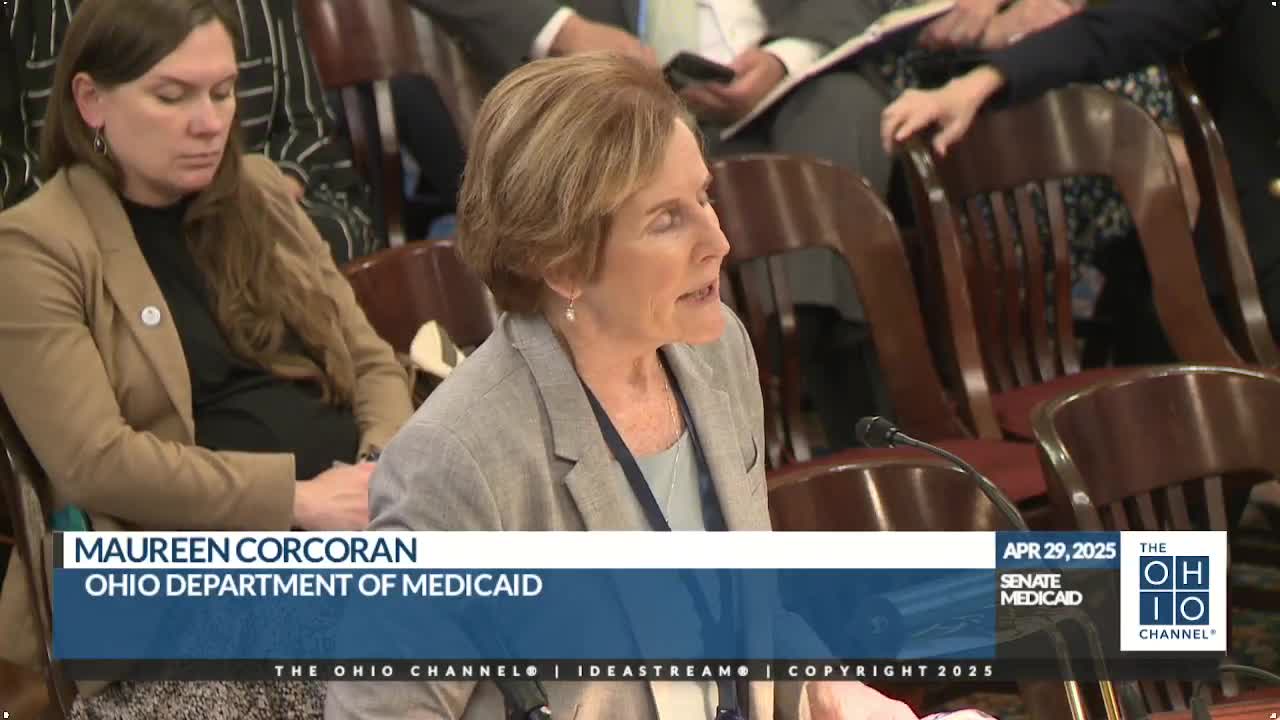Texas hospitals propose unified metric system for Medicaid quality projects
April 29, 2025 | Medicaid, Senate, Committees, Legislative, Ohio
This article was created by AI summarizing key points discussed. AI makes mistakes, so for full details and context, please refer to the video of the full meeting. Please report any errors so we can fix them. Report an error »

In a pivotal meeting of the Ohio Senate Medicaid Committee on April 29, 2025, discussions centered around a transformative proposal aimed at streamlining hospital projects across the state. As representatives from over 47 hospitals gathered, the urgency of the current healthcare environment was palpable. The committee emphasized the need for a unified approach to avoid the chaos of multiple, disparate initiatives that could overwhelm resources and complicate evaluations.
The proposal, likened to a system of "three canoes," seeks to categorize hospital projects into three distinct areas: physician services, inpatient and outpatient care, and outcomes acceleration for children. This structure aims to standardize metrics and streamline administration, ensuring that hospitals can focus on their specific projects without the burden of conflicting requirements. The initiative is designed to protect funding and align with federal Medicaid quality requirements, providing a stable foundation for future healthcare initiatives.
The financial implications of this proposal are significant. The hospitals have collectively requested $2.5 billion in funding, with an estimated $792 million in public dollars needed to facilitate these projects. However, the anticipated net gain for hospitals could reach approximately $1.67 billion, a substantial boost that underscores the importance of this collaborative effort.
The committee also addressed the complexities of the 340B drug pricing program, which has been a point of contention. Proposed changes aim to enhance cost containment and ensure that rebate revenues do not erode, potentially saving the state $334 million. This aspect of the discussion highlighted the need for equitable financial practices among hospitals, particularly as rural facilities seek to navigate the challenges of funding and patient care.
As the meeting progressed, the conversation shifted to the potential for a local tax pilot program among rural hospitals. This initiative, still in its infancy, aims to foster collaboration with county commissioners to secure necessary funding. However, the timeline for implementation remains uncertain, indicating the ongoing challenges faced by rural healthcare providers.
In conclusion, the Ohio Senate Medicaid Committee's discussions reflect a critical moment for the state's healthcare system. By fostering collaboration among hospitals and streamlining funding processes, Ohio aims to enhance healthcare delivery while ensuring that resources are utilized effectively. As the committee moves forward, the implications of these proposals will be closely watched, with the potential to reshape the landscape of healthcare in Ohio for years to come.
The proposal, likened to a system of "three canoes," seeks to categorize hospital projects into three distinct areas: physician services, inpatient and outpatient care, and outcomes acceleration for children. This structure aims to standardize metrics and streamline administration, ensuring that hospitals can focus on their specific projects without the burden of conflicting requirements. The initiative is designed to protect funding and align with federal Medicaid quality requirements, providing a stable foundation for future healthcare initiatives.
The financial implications of this proposal are significant. The hospitals have collectively requested $2.5 billion in funding, with an estimated $792 million in public dollars needed to facilitate these projects. However, the anticipated net gain for hospitals could reach approximately $1.67 billion, a substantial boost that underscores the importance of this collaborative effort.
The committee also addressed the complexities of the 340B drug pricing program, which has been a point of contention. Proposed changes aim to enhance cost containment and ensure that rebate revenues do not erode, potentially saving the state $334 million. This aspect of the discussion highlighted the need for equitable financial practices among hospitals, particularly as rural facilities seek to navigate the challenges of funding and patient care.
As the meeting progressed, the conversation shifted to the potential for a local tax pilot program among rural hospitals. This initiative, still in its infancy, aims to foster collaboration with county commissioners to secure necessary funding. However, the timeline for implementation remains uncertain, indicating the ongoing challenges faced by rural healthcare providers.
In conclusion, the Ohio Senate Medicaid Committee's discussions reflect a critical moment for the state's healthcare system. By fostering collaboration among hospitals and streamlining funding processes, Ohio aims to enhance healthcare delivery while ensuring that resources are utilized effectively. As the committee moves forward, the implications of these proposals will be closely watched, with the potential to reshape the landscape of healthcare in Ohio for years to come.
View full meeting
This article is based on a recent meeting—watch the full video and explore the complete transcript for deeper insights into the discussion.
View full meeting
